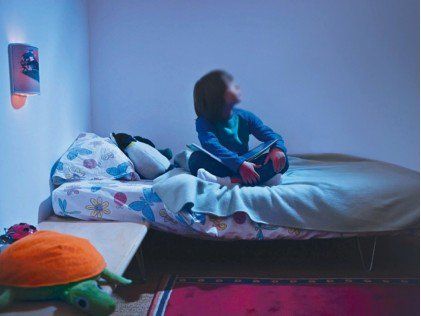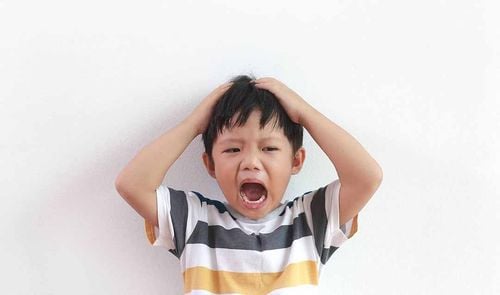This is an automatically translated article.
Parasomnias pseudo-insomnia is a common sleep disorder that can lead to some abnormal manifestations during sleep, thereby affecting the quality of sleep as well as the quality of life of the patient. Parasomnias need to be diagnosed correctly in order to have the most effective treatment for the patient.
1. What are Parasomnias?
Parasomnias is a sleep disorder that causes abnormal sleep behaviors that can occur during any stage of sleep, including the transition from wakefulness to sleep. sleep state and vice versa. If you have Parasomnias, you often walk, talk, and perform other unusual actions while you sleep. People around them may think they are awake and alert, but actually these people are not aware at the time and they are often unable to recall what has been done.
Parasomnias are quite common and make it very difficult for many people to have a relaxing sleep. Abnormal sleep behaviors also disrupt the sleep of loved ones around the patient. Accordingly, there are some very dangerous cases of Parasomnias, because at this time the patient is no longer able to perceive the surroundings. Some health-related side effects also occur, such as psychological stress.
Like other sleep disorders, Parasomnias can be cured if the cause is found and the correct type of Parasomnias is identified.
Some types of insomnia Parasomnias are divided clinically:
Sleepwalking: Sleepwalking, also known as Somnambulism, is a condition of walking while sleeping, is one of the most common Parasomnias. Sleepwalking is also often accompanied by talking while sleeping or doing daily chores around the house. Usually sleepwalking occurs early in the night or naps during the day.
Sleep Talk: This is the second most common of the parasomnias, known medically as Somniloquy. Talking during sleep can often be very diverse, be it mumbling or speaking like a conversation. Unlike sleepwalking, talking while sleeping can happen at any time and is more common in the early stages of sleep. Sleep-related groaning: Also known as Catathrenia, causes the patient to groan loudly during sleep, especially when the patient exhales slowly and deeply. Moans can be heard such as roars, crackles with high pitch... This insomnia is often confused with snoring, but unlike snoring, whining is not usually associated with problems. about the respiratory tract. Nightmares: Nightmares are terrible, heavy dreams of the sleeper that cause anger, anxiety, and even fears. If nightmares occur frequently, it is diagnosed as nightmare disorder. This type of Parasomnias often makes it difficult to get back to sleep, and in some cases, multiple nightmares in the same night. Bedwetting: Nocturnal enuresis is involuntary urination during sleep, very common in children, especially those under 6 years of age. Bedwetting occurs when the bladder holds more urine than is allowed, either for no reason at all or due to certain urinary tract conditions such as urinary tract infections.

Parasomnias được chia làm nhiều loại trong đó có mộng du
2. How are Parasomnias treated?
To treat insomnia pseudo-parasomnias, some measures can be applied as follows:
Oral medications: Some drugs used to treat Parasomnias such as Topiramate, antidepressants, Dopamine agonists, Melatonin... Cognitive-behavioral therapy: This is a popular method to treat insomnia because it affects the patient's mental worries and stress. Some additional measures are applied such as psychotherapy, relaxation therapy, hypnosis... In addition, some measures can be taken at home such as scheduled wake-ups, creating a safe sleeping environment. all...
Pseudo-insomnia Parasomnias can be successfully treated if detected early and diagnosed correctly. Treatment of Parasomnias can help patients improve sleep as well as better quality of life, thereby helping patients to maintain their life expectancy.
Please dial HOTLINE for more information or register for an appointment HERE. Download MyVinmec app to make appointments faster and to manage your bookings easily.













